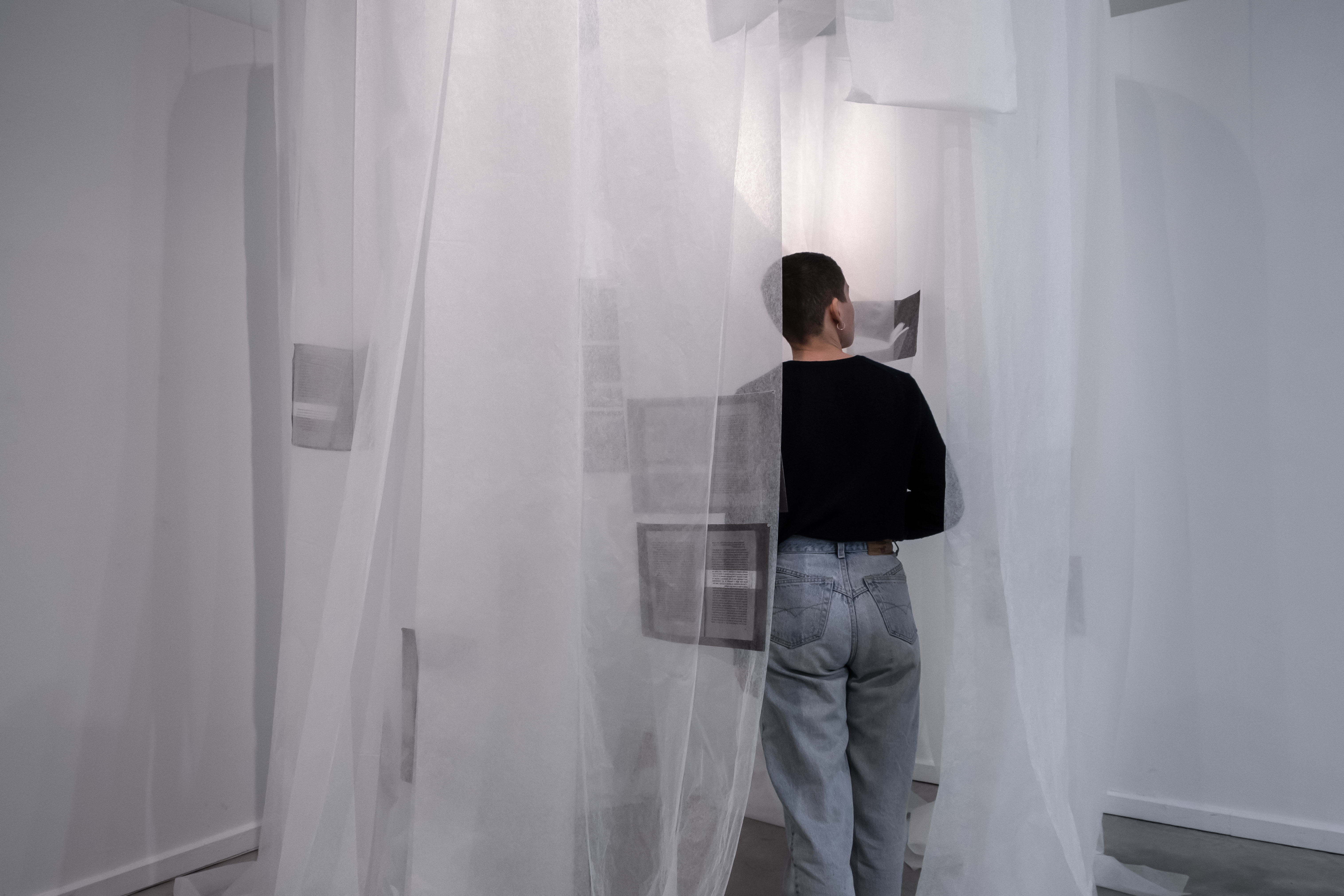Si ça vibre
2023, Bruxelles
Papier japon, enregistrement audio, tiges filetées en acier, câble d’acier, impressions noir & blanc de scans et captures d’écran
350 x 190 x 190cm
4’00”
Si ça vibre entame une réflexion autour de la notion de lecture à voix haute, plus exactement du texte porté par la voix.
«L’important [...] c’est que la lecture fasse appel à l’ensemble de ses composantes – c’est-à-dire un lecteur, un auditoire et un livre [...] 1».
Le lecteur, “présent” par la voix enregistrée, s’incarne en filigrane d’un corpus d’images rejouant la gestuelle de lecture publique. Le livre existe dans la structure elle-même : un ensemble de pages reliées entre elles par une tige filetée. Les scans de double-pages – notes de lecture produisant un sous-texte réflexif à l’intérieur de l’installation – rendent à l’objet sa forme usuelle.
Il y a dans cet espace quelque chose de la cabane en draps que l’on construit enfant, espace sécuritaire de projection pour écouter lire. Par analogie des vibrations de la voix déplaçant le texte lu jusqu’aux oreilles de l’auditeur, les déplacements d’air dans l’espace font vibrer les “pages”, activant le dispositif, unité spatio-temporelle aux limites floues.
1. Alberto Manguel, Une histoire de la lecture. (éd. française, traduite pas Christine Leboeuf) Actes Sud, 1998, p. 183
Si ça vibre
2023, Bruxelles
Japanese paper, audio recording, threaded steel rods, steel cable, black & white prints of scans and screenshots
350 x 190 x 190cm
4’00”
Si ça vibre is an research around the notion of reading aloud, or more precisely, of the text carried by the voice.
«The important thing [...] is that the reading involves all its components - a reader, an audience and a book [...] 1».
The reader, “present” through the recorded voice, is embodied in a corpus of images re-enacting the gestures of public reading. The book exists in the structure itself : a set of pages linked together by a threaded rod. Some scans of double pages - reading notes that produce a reflexive subtext within the installation - return the object to its usual form.
By analogy with the vibrations of the voice moving the text read to the listener's ears, the air movements in the space make the "pages" oscillate, activating the installation, a spatio-temporal unit with blurred boundaries.
1. Alberto Manguel, A History of Reading. (French ed., translate by Christine Leboeuf) Actes Sud, 1998, p. 183





